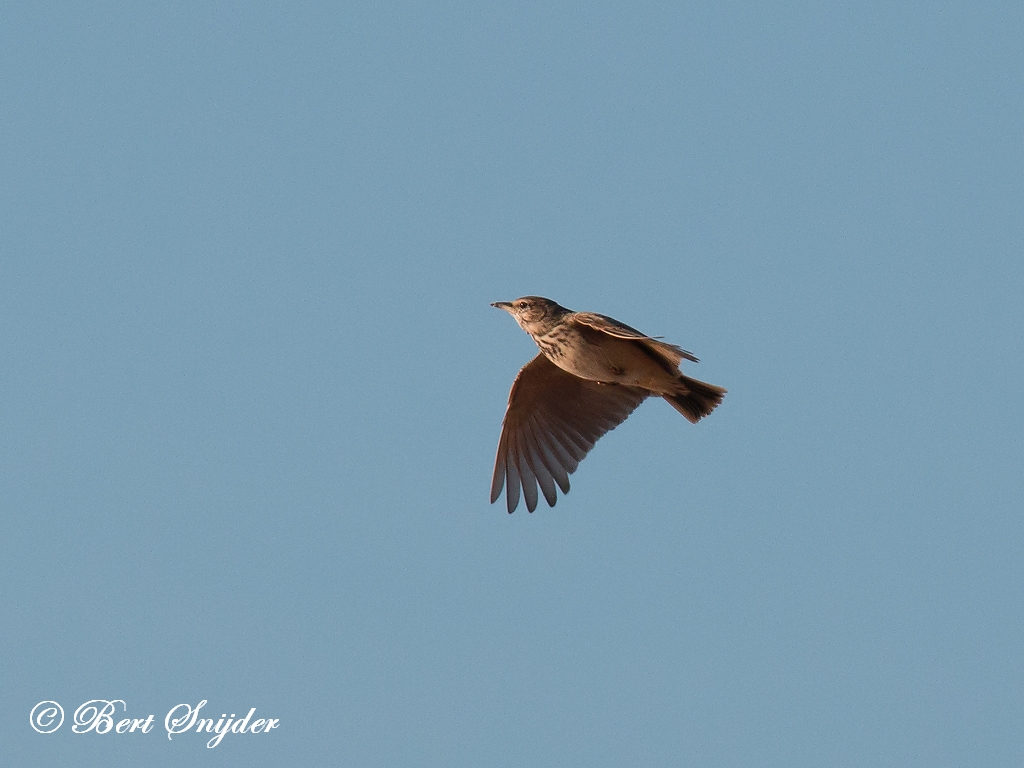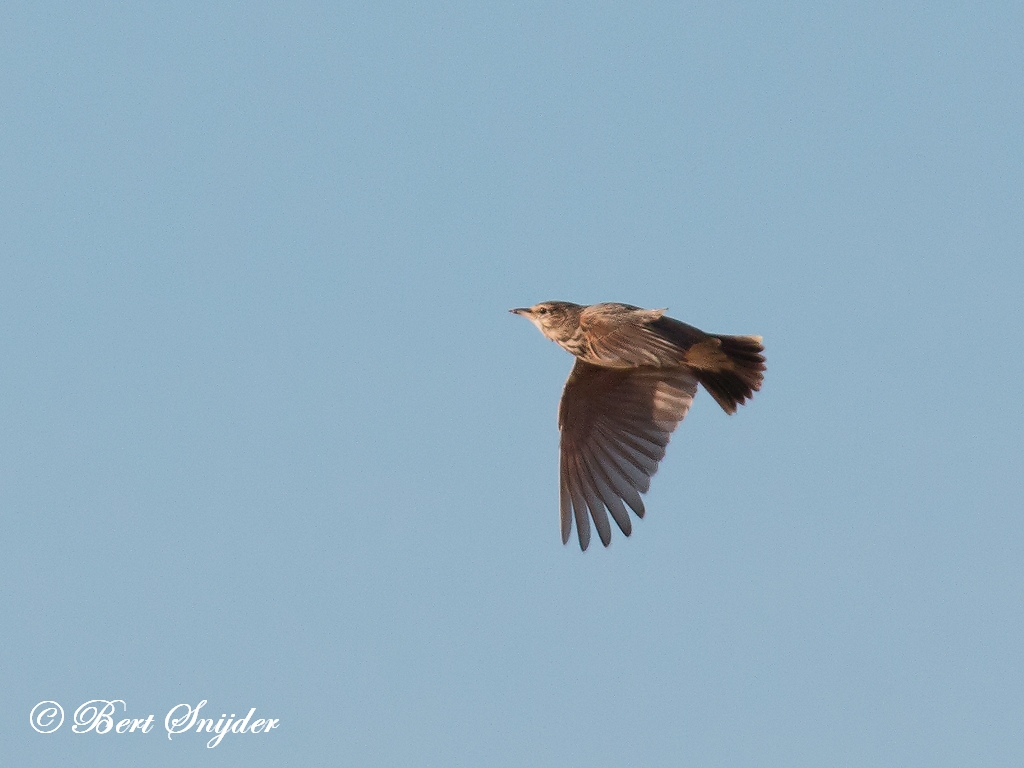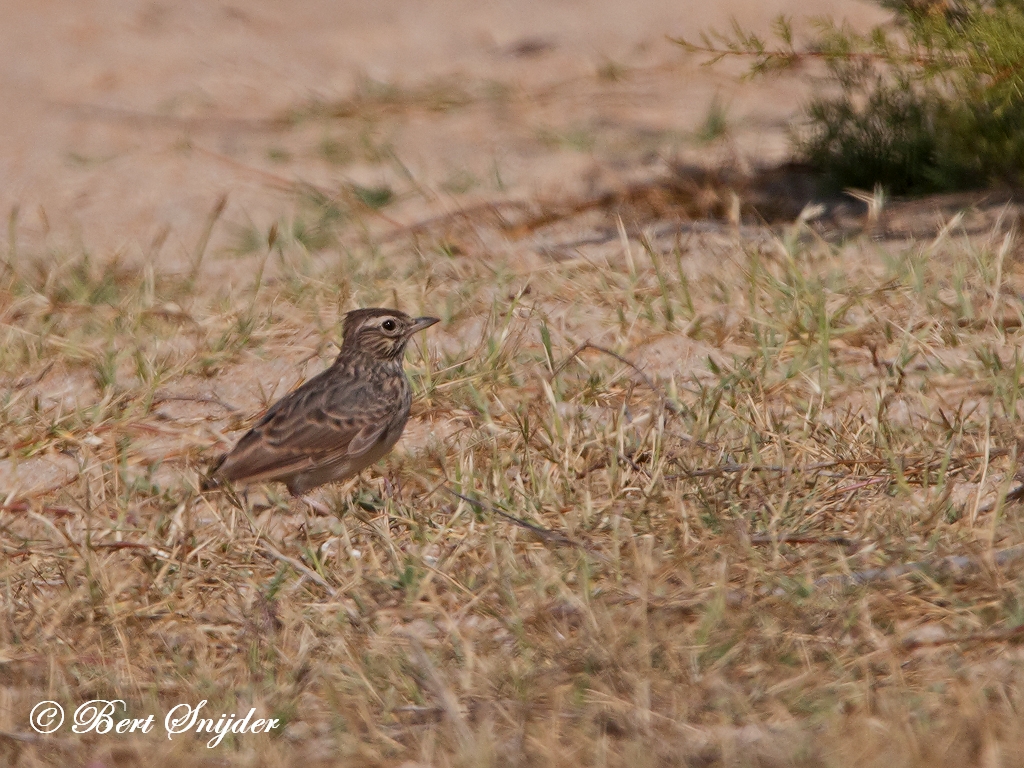Skylark, Veldleeuwerik, Feldlerche, Laverca, Alondra de Eurasia
Alauda arvensis
Spotted in the Alentejo region of Portugal. Skylark sound
The Eurasian Skylark (Alauda arvensis) is a small passerine bird species. This lark breeds across most of Europe and Asia and in the mountains of north Africa. It is mainly resident in the west of its range, but eastern populations are more migratory, moving further south in winter. Even in the milder west of its range, many birds move to lowlands and the coast in winter. Asian birds appear as vagrants in Alaska; this bird has also been introduced in Hawaii, western North America, eastern Australia and New Zealand. The Japanese Skylark is now usually considered a subspecies.

More photos at the bottom of this page.
The Eurasian Skylark is 16 to 18 centimetres long. It is a bird of open farmland and heath, known throughout its range for the song of the male, which is delivered in hovering flight from heights of 50 to 100 m, when the singing bird may appear as just a dot in the sky from the ground. The song generally lasts two to three minutes, but it tends to last longer later in the mating season. The male has broader wings than the female. This adaptation for more efficient hovering flight may have evolved because of female Eurasian Skylarks’ preference for males that sing and hover for longer periods and so demonstrate that they are likely to have good overall fitness.
Like most other larks, the Eurasian Skylark is a rather dull-looking species on the ground, being mainly brown above and paler below. It has a short blunt crest on the head, which can be raised and lowered. In flight it shows a short tail and short broad wings. The tail and the rear edge of the wings are edged with white, which are visible when the bird is flying away, but not if it is heading towards the observer. The Eurasian Skylark has sturdy legs and spends much time on the ground foraging for seeds, supplemented with insects in the breeding season.
The Eurasian Skylark makes a grass nest on the ground, hidden amongst vegetation. It is sometimes found nesting in bracken, using it for cover. Generally the nests are very difficult to find. Three to six eggs are laid in June. A second or third brood may be started later in the year. The eggs are yellow/white with brownish/purple spots mainly at the large end.



Other synonyms:
Asturian: Calandra, Calandria
Breton: Alc’hweder, An alc’hweder sant Pêr, Ec’hweder
Catalan: Alosa, Alosa vulgar
Catalan (Balears): Alosa
Czech: skøivan polní, Skrivan polní
Welsh: Ehedydd, Hedydd, Uchedydd
Danish: Sanglærke
German: Feldlerche
English: Common Sky Lark, Common Skylark, Eurasian Sky Lark, Eurasian Skylark, European Skylark, Northern Sky Lark, Northern Skylark, Sky Lark, Sky Lark (European), Skylark
Esperanto: kampalaûdo
Spanish: Alondra, Alondra Comun, Alondra Común, Alondra de Eurasia
Estonian: Poldlooke,
Basque: Alosa vulgar , Hegatxabal
Finnish: Kiuru, Leivonen
Faroese: Lerkur
French: Alouette des champs
Frisian: Ljurk
Irish: Circín starraiceach, Fuiseog, Fuiseóg
Gaelic: Uiseag
Galician: Alosa vulgar , Laverca
Manx: Ushag Happagh, Ushag Tappagh, Ushag y Tappee, Ushag-happagh
Croatian: Poljska Ševa, Ševa vintulija
Hungarian: Mezei pacsirta
Icelandic: Sönglævirki
Italian: Allodola, Allodola eurasiatica
Japanese: hibari, nishihibari, Youroppa-hibari
Cornish: Awhesyth
Latin: Alauda arvensis, Alauda arvensis [arvensis Group]
Lithuanian: Cyrulis, Dirvinis vieversys, Voversys, Vyturys
Latvian: lauku cirulis
Maltese: Alwetta
Dutch: Veldleeuwerik
Norwegian: Englerke, Lerke, Sanglerke
Polish: Lerka, skowronek, skowronek (skowronek polny), skowronek (zwyczajny), skowronek polny, skowronek zwyczajny
Portuguese: Calhandra, Cotovia, Laverca
Romansh: Lodola da prada
Romanian: Ciocârlie
Russian: Polevoy Zhavoronok
Sardinian: Calandria Cucullia, Incurbayola, Iscreanissa, Orgiai, Piattaritta, Prantaritta, Sulodri, Terrighinaza, Tragaditta
Scots: Uiseag
Northern Sami: Leivvoš
Slovenian: poljski škrjanec
Albanian: Lauresha, Laureshë
Serbian: Alauda, poljska ševa
Swedish: Sånglärka
Travel Birdwatching Holiday Alentejo, Vacation Portugal for birders to see birds on your trip Guided Birdwatching Tours